Whether you’re taking a virtual cooking class to start a new hobby or you’re in charge of preparing meals for the household, there are some safety guidelines you need to keep in mind before you get in the kitchen. It’s vital you take the proper steps when dealing with food to maintain high food safety standards.
Here’s a list of tips to help you stay safe while trying out cooking that can help you better enjoy your new hobby.
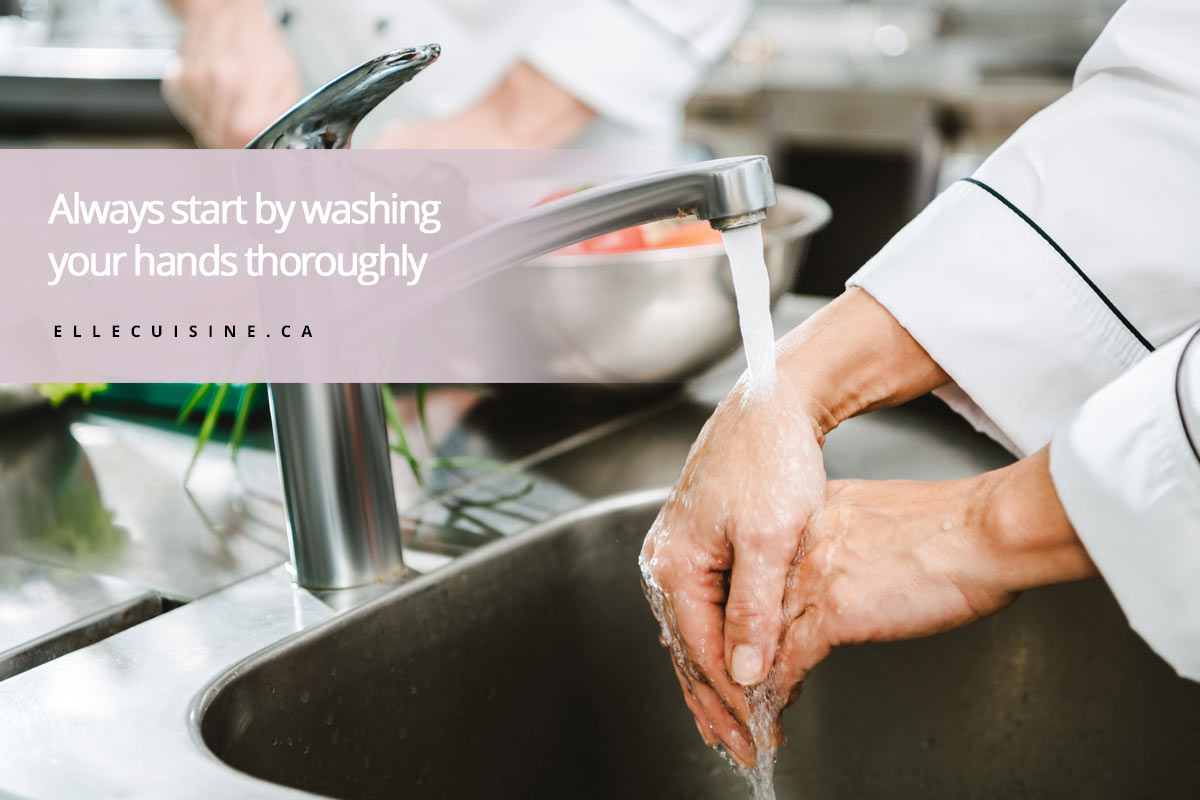
1. Always wash up first
A common nugget of wisdom is that washing your hands frequently is the most effective way to prevent infection. That bit of advice is more important than ever, especially when it comes to food. Your hands are a common carrier of germs, so take steps to sanitize them before you start.
Make a habit of washing your hands thoroughly in warm, soapy water before and after handling food. It’s a great way to minimize contamination of the food and your hands. Wash for at least 20 seconds to ensure you eliminate the maximum number of germs every wash cycle.Give the same attention to your ingredients and tools. Wash your fruits and vegetables before cooking, and clean your knives and cutting boards after use. Keep in mind not to wash raw poultry before cooking; rinsing can spread any germs present, so count on cooking to eliminate germs.
2. Watch the high-risk foods
Be especially careful with high-risk foods like raw meats, eggs, dairy products, and seafood. To make it easier to cook and eat these foods safely, take extra care when buying them.
Check the expiration dates on meat, poultry, and fish to ensure that it’ll stay edible when you plan to use them. As a rule of thumb, it’s also a good idea to avoid any foods with unexplained strong odours. Even if it hasn’t hit the expiration date, the smell may be a red flag. Make sure to buy refrigerated foods last to ensure maximum freshness and when you take it home.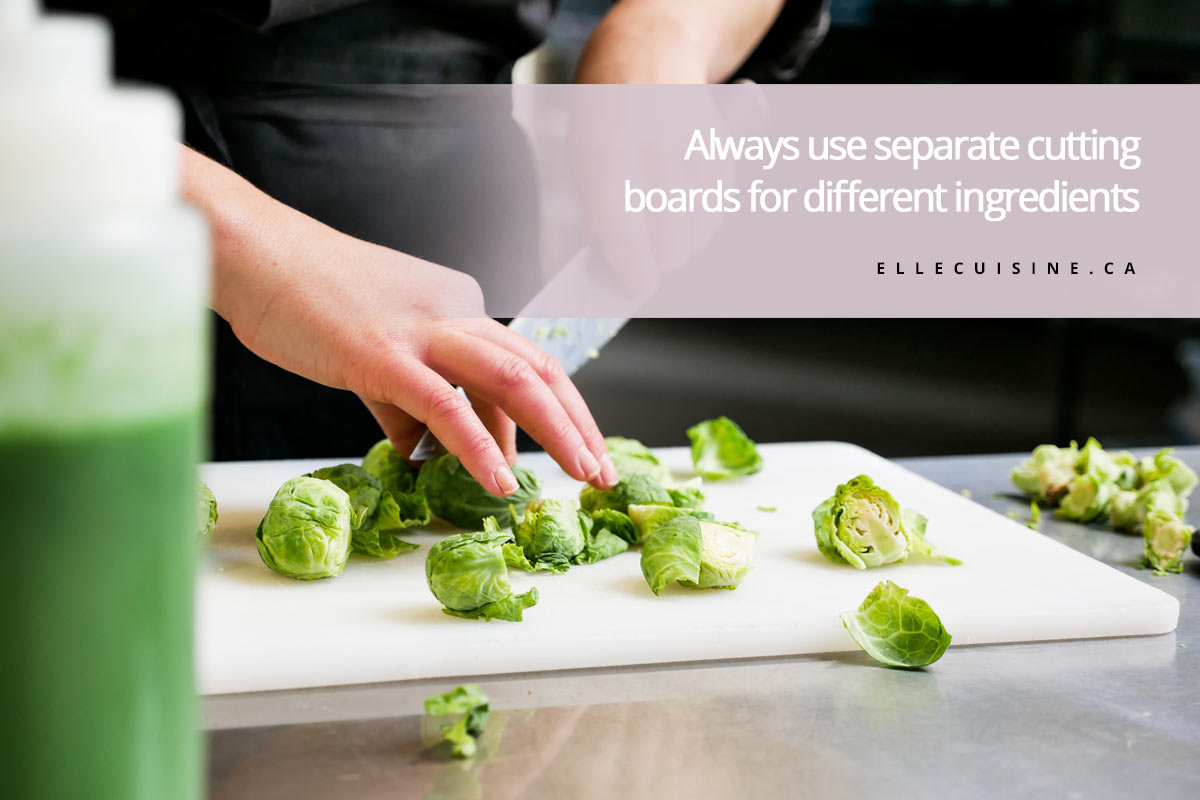
3. Sanitize your work surfaces
Washing your hands is only the first step to maintaining a clean kitchen. Make sure you give the same treatment to any surfaces that come into contact with raw food, like cutting boards and countertops. Germs can spread and make their way to surfaces that may come into contact with your food, so take steps to disinfect those surfaces and maintain hygiene.
Use a homemade cleaning solution of 1 tablespoon of chlorine bleach in 1 gallon of water to sterilize your cutting boards. After disinfecting, give your cutting boards a thorough rinse with warm, soapy water. Paper towels are ideal for wiping the cutting boards; use them to finish cleaning and pat the boards dry.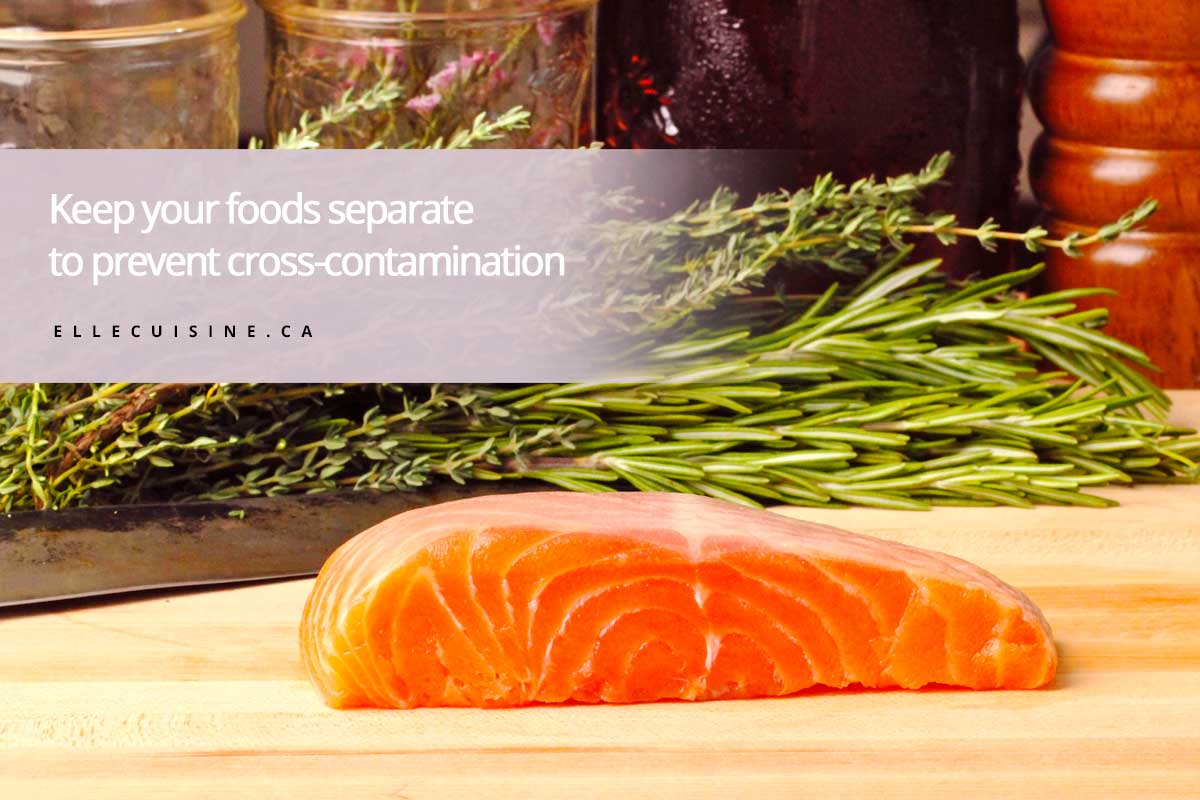
4. Separate food items
A common food safety tip you’ll hear often is to separate different food items. Have multiple cutting boards on hand to handle different types of food. Have one board designated for meat, another for vegetables, and another for cooked or prepared food.
Raw food, particularly meat, may contain harmful pathogens that can spread to other ingredients. If you only have one knife, wash it thoroughly after you’ve used it on raw meat to remove bacteria. Also, don’t place cooked food on any dish or board that’s held raw food to prevent cross-contamination. It may feel difficult to look after multiple boards and plates, but it’s a good way to maintain safe, healthy food preparation in the kitchen.
When storing uncooked food in the fridge, place them at the bottom, below the ready-to-eat foods to keep them from dripping juices onto other foods.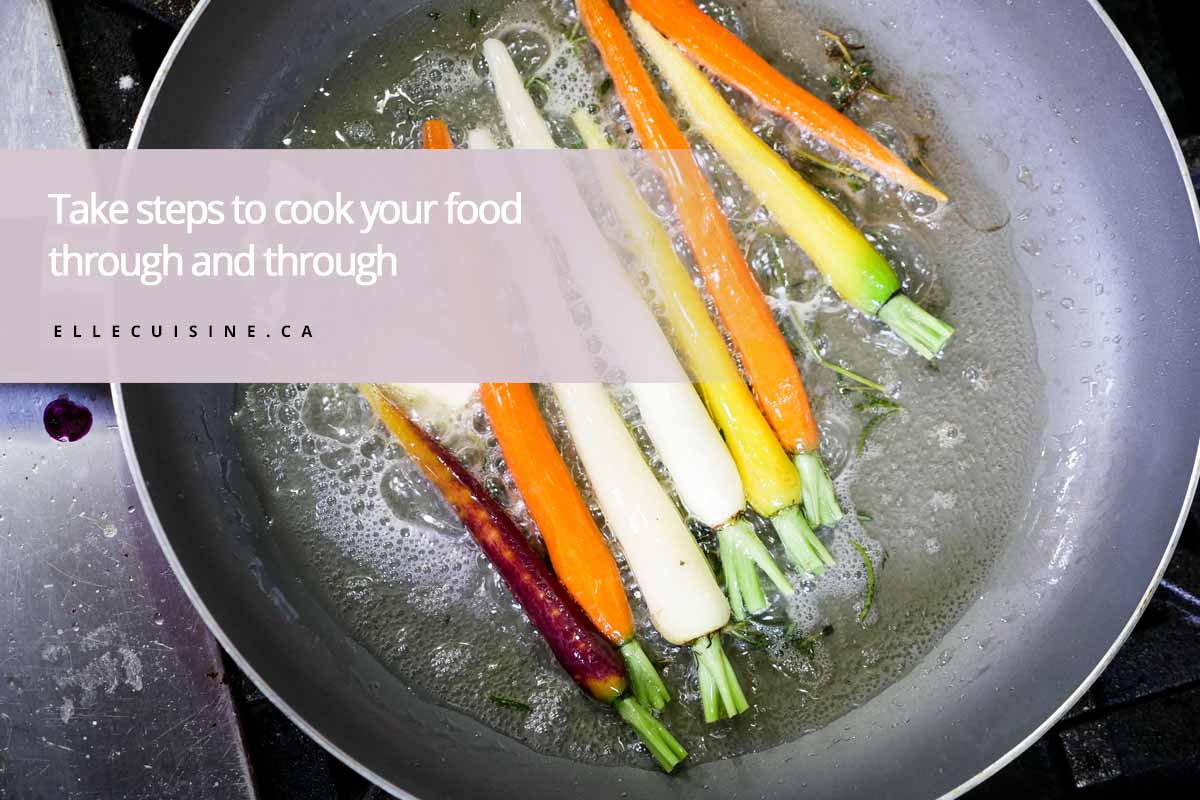
5. Get the heat right
Part of cooking is making sure the food reaches high enough internal temperatures to kill the germs inside. The specific temperature may vary between different foods and cuts of meat, but there are some basic guidelines on safe internal temperatures to give you a general idea of what to expect.
Experienced cooks can often tell if food has been cooked through just by looking, but if you’re a beginner, it may help to use some tools to give you a hand. Invest in a cooking thermometer to help you measure the temperature more accurately. Not only is it a great way to make your food safer to eat, but once you have enough experience you can also use the thermometer to help tweak your recipes. Want to try cooking food rare, medium, or well done? Then the thermometer might be one effective tool to help you get it right. 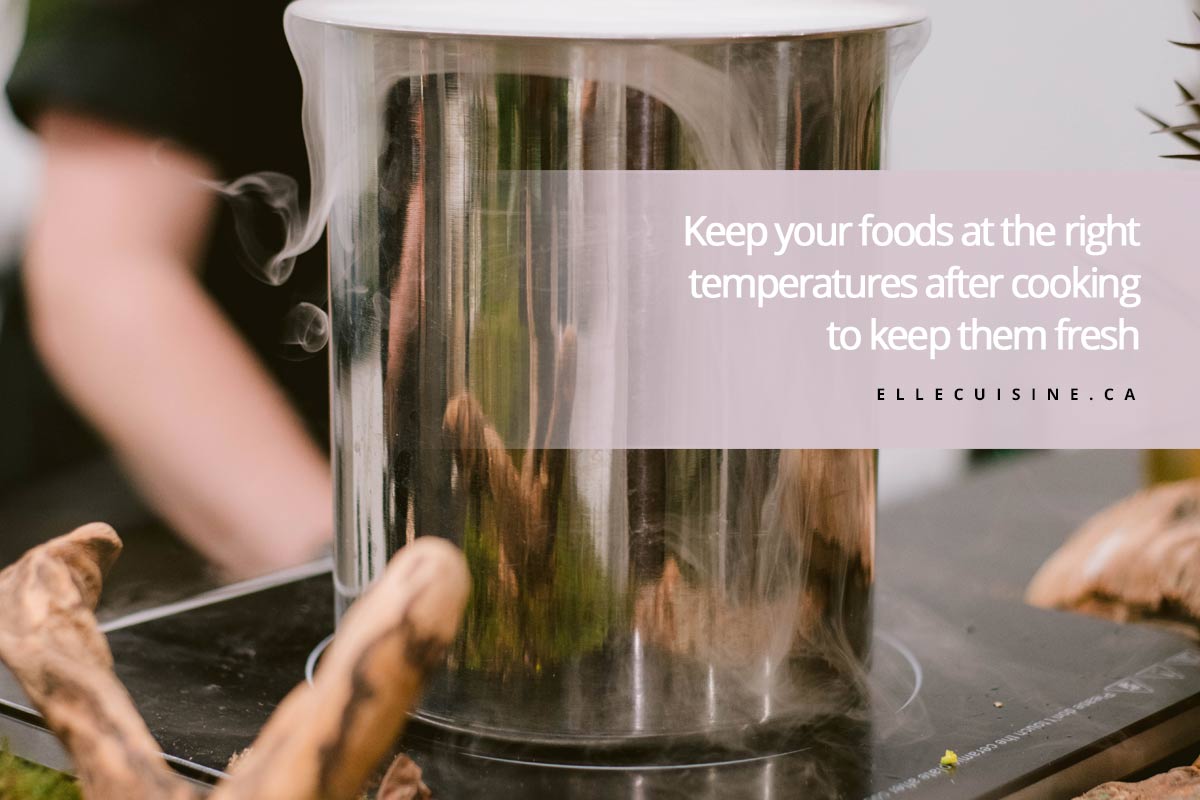
6. Keep warm food warm and cold food cold
Maintaining the right temperatures for your food does not only preserve taste, it also a way to minimize the risk of contamination once the food leaves the kitchen and finds itself on the table.
As a rule of thumb, hot food should be kept around 60°C, while cold food should be kept around 4.4°C. Use warming trays, crockpots, or slow cookers to keep the food warm just before eating to maintain maximum freshness until you take the first bite. For cold foods, nest your dishes in bowls of ice to keep them cool. Whichever foods you have, remember to inspect your dishes regularly to make sure they don’t go above or below the optimal temperature. Keep this tip in mind to help keep your food fresh and tasty at your next private party.
7. Use your fridge wisely
Storing leftovers in the fridge is a great way to counter any germs and save those foods for another day. Ideally, put your leftovers in the fridge within 2 hours to prevent any issues with food safety. On hot days, do it within an hour.
Refrain from filling your fridge to the brim. The cool air inside needs space to circulate properly. Divide large amounts of leftovers into small, shallow containers for quick cooling. When taking leftovers out of the freezer, thaw them in the fridge or in water instead of at room temperature. When thawing with water, change the water every half hour to keep the food warm, then cook immediately.
Microwave thawing works quickly as well. If you do this, cook the food right after thawing to be on the safe side.
When it comes to food, it pays to err on the side of caution. Follow these tips to make sure that you’re preparing dishes that are healthy and safe for everyone.
You can also entrust your meals to a catering service. For safe and tasty food to make your next event a memorable one, give elle cuisine a call. We offer quality catering and ready-made meals for you and your household. We adhere strictly to food safety standards while offering you mouth-watering meals prepared by experienced and talented chefs. Contact us now at 647.430.3553.
